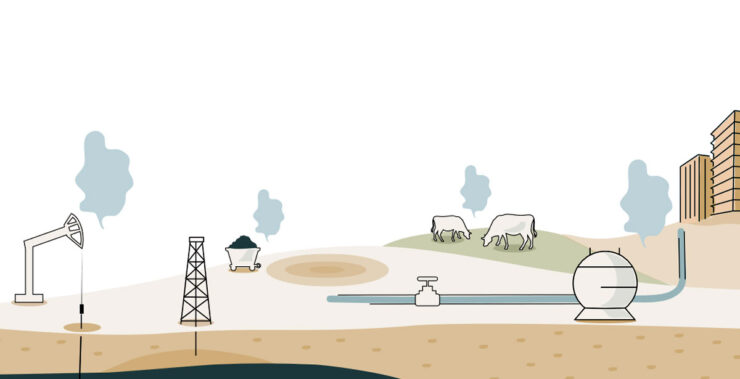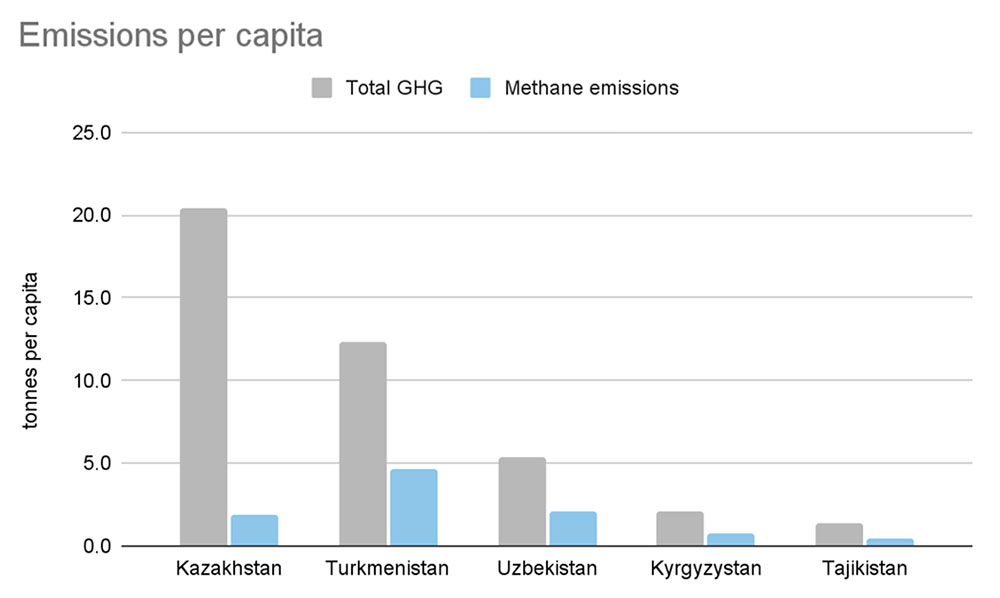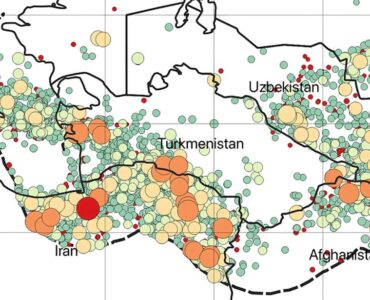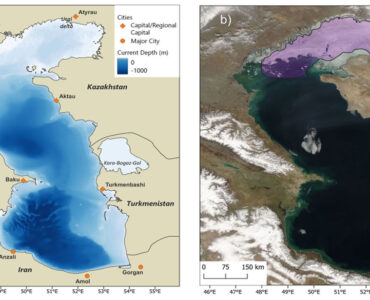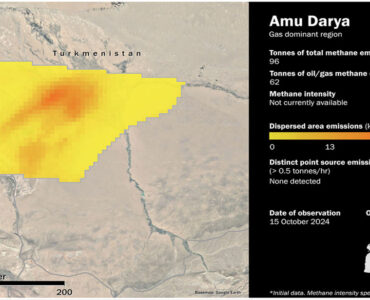A recently published report Methane in Central Asia: emissions, trends, actions by Zoï Environment Network looks into methane emissions in Central Asian countries. The report presents an overview of the source of the emissions within each country, trends in the energy sector and natural gas markets and recommendations that can help to minimize the emissions going forward.
Methane, a main constituent of natural gas, is a very potent greenhouse gas. Although combustion of methane has lower global warming potential compared to other fossil fuels, raw methane released into the atmosphere has 30 times more global warming potential compared to carbon dioxide.
According to the report, Kazakhstan has the highest total greenhouse gas GHG emissions which includes emissions from coal, oil and natural gas in energy, non-energy use and leakages. Turkmenistan is in second place. The emissions are based on remote sensing estimates (e.g., satellite imagery) and the population numbers are based on officially reported statistics of 5.8 million people.
Numbers
Turkmenistan’s annual emissions exceed 65-75 million tonnes of CO2-eqv, which comes to 10–12 tonnes per person. Methane emissions – largely from natural gas production and leaks – account for nearly half (27-35 million tonnes of CO2-eqv) of the total emissions. Remote sensing data suggest that large methane leaks (10-40 tonnes per hour or 150 000 tonnes per year) occur at some gas compressor stations in Turkmenistan.
Domestic gas consumption in Turkmenistan is estimated at 14-20 billion m3/year, half used for power and heat production and by the petrochemical industry.
Source: Zoï Environment Network, Methane in Central Asia, 2022
According to the authors’ of the report, Turkmenistan’s actual GHG emissions, related to energy consumption and industrial use, could be much lower if only the leakages were addressed fully. Natural gas has the lowest emissions factor among all fossil fuels, when combusted. So next to Kazakhstan and Uzbekistan that use coal, Turkmenistan could have much lower emissions.
Authors propose that an intervention by the government in regulating the gas industry with (1) modern efficiency standards, (2) methane monitoring and (3) leak reduction actions can help reduce the methane leakages.
Quote: “On the global methane emission maps, Turkmenistan often looks red. Its vast gas reserves, high production levels and high leakage at gas producing fields, compressor stations and pipelines contribute to the excessive methane emissions. While the country is taking steps to modernize its energy and industrial sectors, its gas production volumes and methane emissions will likely increase, and one of the feasible climate targets is the decoupling of emissions from economic and energy growth”.

